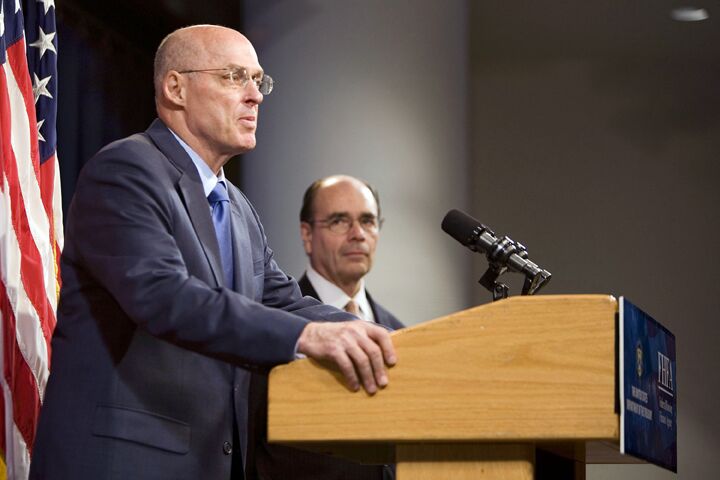
What the Fannie and Freddie Nationalization Means
On Friday, the federal government announced it was nationalizing the two giant mortgage lenders Fannie Mae and Freddie Mac. Predictably, the markets responded as if it was the end of the credit crisis. Hardly anything could be further from the truth. We are just getting started.
The economy is in such a precarious position that even though the bailout will be disastrous for taxpayers and the economy from a longer-term perspective, the immediate consequences of letting the lenders fail would most likely have been even worse. If Fannie and Freddie had collapsed, America probably would have had economic Armageddon on Monday.
As Gerald P. O’Driscoll Jr. wrote in the New York Post, “At the moment, they’re too big to fail but also too costly to keep.”
America’s economy has similarities to a drug addict. It desperately needs cheap money. If you take the easy money away (let Fannie and Freddie fail) the economy goes into cardiac arrest (or that is the fear). But give the lenders another shot of money (from the U.S. Treasury), and maybe the economy will keep functioning for a while longer. Inject enough money and you can even induce a temporary high. The problem is, you constantly need ever increasing amounts of dollars to remain in the “feel good” zone. And all the while, other side effects, such as a devaluing dollar, rising inflation, and deteriorating credit worthiness, drain the future economic life of the nation.
Fannie and Freddie were huge sources of money for the economy. They provided inexpensive loans and provided financing to many people who would normally have been considered too risky for traditional lenders. This increase in demand for homes—and the resulting increase in home prices across America—helped create the biggest housing bubble in history. Hundreds of thousands of jobs were created during the housing boom, and homeowners were able to use their homes as a cash machine by borrowing money against their rising value.
Now, because of the current banking crisis—which is the result of risky lending, skyrocketing foreclosures, and plummeting home prices—the major lenders have curtailed lending, or have gone bankrupt. Consequently, Fannie and Freddie now fund around 75 percent of all mortgages issued in the country. If Fannie and Freddie had failed, the complete mortgage market would have gone into meltdown.
Unfortunately, the Fannie and Freddie takeover will do little to fix the system. Nothing fundamental has changed. Housing prices keep falling, unemployment has now increased to a five-year high, and foreclosures continue to escalate. As long as the housing market deteriorates, bank balance sheets will pay the price for years of risky lending practices. Government officials have opted for what they considered the lesser of two evils and traded hundreds of billions in bad Fannie and Freddie loans for a functioning lending market.
The seizure also illustrates just how dependent America is on foreign lenders.
These foreign investors (primarily the Chinese, Japanese and Middle Eastern oil exporters) are the same ones that provide the hundreds of billions of dollars the federal government needs to borrow each year to function. The federal government had to keep its foreign creditors happy, and as the Wall Street Journal points out, the Treasury Department was receiving a flurry of calls from angry and worried Asian investors just prior to its decision to nationalize the two lenders. America cannot afford to have China and Japan angry.
For example: Last August, two Chinese government officials highlighted how China could use its massive U.S. dollar holdings (which include hundreds of billions in government treasuries) as a political weapon to influence the United States. One Chinese cabinet-rank minister went as far as saying that America’s debt should be used as a “bargaining chip” to influence trade talks. Another Chinese official warned that China could set off a dollar crash if it so desired. Chinese state media referred to the country’s stockpile of U.S. dollars as its economic “nuclear option,” capable of destroying the dollar at will.
This angle of the risk of foreign capital flight has not been well covered in the media. And part of the reason may be that the dollar has rallied lately—rising approximately 10 percent since mid-July as measured against the U.S. Dollar Index (a basket of currencies). However, the rise of the dollar is not the reflection of newfound strength in the U.S. economy; it more reflects the breakdown of confidence in other economies and their currencies, such as the pound, the euro and others. The dollar is still down about 40 percent from 2002.
The most likely result of the Fannie and Freddie seizure will be temporary stability. Mortgage rates fell following the announcement, so credit markets may temporarily loosen up.
But longer term, economic prospects have not changed. Five trillion dollars’ worth of suspect mortgages are now on the federal government’s books. This means that U.S. government debt will become suspect, and there is an increased chance that U.S. bonds will be downgraded in the future to reflect the increased likelihood of a reduced credit rating. The takeover will also place more pressure on the dollar, at least over the longer term.
